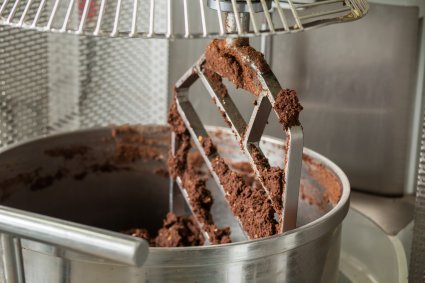The field of sanitary design probably isn’t on everyone’s radar, but it plays an increasingly important role in driving food safety, supporting workforce needs, and achieving efficiencies and waste reduction in baking facilities.
The latest Bake to the Future podcast from American Bakers Association (ABA) delves into the role of sanitary design in helping the industry make smarter decisions about building and operating manufacturing facilities and choosing equipment cleaning strategies. Sanitary design can reduce complexity for employees in executing their work, which is especially helpful in the face of staffing challenges.
“A lot of facilities and systems were put in place many years ago, before we understood all the risks involved,” said Karl Thorson, the Global Food Safety and Sanitation Manager at General Mills. “Today there’s a greater incidence and understanding of foodborne illness, allergens, and other problems. There’s a lot of opportunity to make things better.”
Thorson was interviewed by Katie Juhl, ABA’s Director, Marketing and Communications and Hailey Blumenreich, Marketing and Communications Manager.
Explaining Sanitary Design
Sanitary design in baking facilities focuses on designing spaces and equipment to manage risk and also be more efficient, Thorson said.
“Think about how you would design your home kitchen,” he elaborated. “You would consider elements like materials and utilities and the ability to move around. It’s the same with our production facilities. We want to manage space well and get into cleaning activities quickly to go back to making product.”
Skill Sets for Leaders
Sanitary design leaders need skills ranging from project management to the ability to work cross-functionally. They should have some experience thinking about the best strategies for facility and equipment design.
It’s also important for them to participate in major conferences and trade events, such as IBIE, the International Baking Industry Exposition, set for September 17-21 of next year in Las Vegas, he added.
Reducing Complexity for Workforces
Staffing challenges lead many companies to bring in new employees who aren’t as experienced in cleaning and maintaining facilities, so Thorson said there’s an incentive to make their roles less complex while supporting them with expertise. One of the biggest challenges in manufacturing facilities is cleaning after production runs. Plant employees deal with hurdles such as hard-to-remove food residues, pathogen risks, and the need to make sure food allergens aren’t left behind.
Implementing sanitary design strategies can help reduce complexity while enhancing strategies.
“We can make things simpler for a new employee or a temporary or seasonal staffer to come in and execute,” he said. “I truly believe it’s going to minimize our food safety risk.”
He uses the acronym KISS for “Keep it Simple for Sanitation.”
Communicating Imperatives to Workforces
It’s important to communicate the importance of sanitary design to employees, and Thorson outlined some of the messaging he uses.
“We talk to them about, ‘Hey, we're feeding millions of people out of our production facilities,”’ he said. “So we've got to manage this to a really high level. And we've got to understand what those hazards are and how we can minimize that risk by designing equipment properly, executing against the cleaning methods as designed, and following good manufacturing practices.”
Starting Early with Strategies
Baking companies should tap into sanitary design expertise when developing new projects, such as designing a new facility, Thorson said.
His typical internal request is, “Please involve us as early as possible.”
Enhancing Design for the Future
Thorson said the industry has future opportunities to enhance sanitary design through improved data and analytics. An important goal would be to design facilities that take into account the new realities of workforces and food safety and don’t require as much cleaning time.
“It's an exciting time when sanitation and food safety is so much at the forefront,” he said. “We’ve got to take advantage of this time and really use this opportunity to improve not only food safety, but really drive efficiencies and help the business to move forward.”






